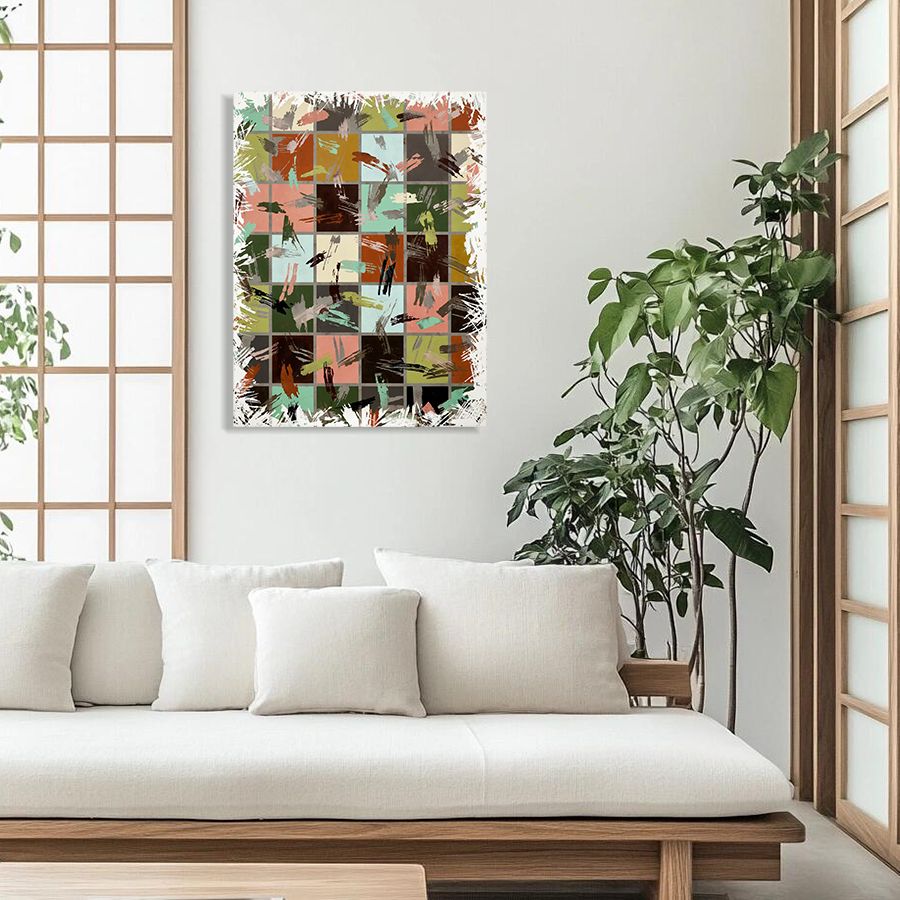Your cart is currently empty!

In our last OKARTY blog, “A Beginner’s Guide to Understanding Abstract Oil Painting: Feel It Before You Paint It,” we talked about feeling the spirit of abstract art before picking up the brush. Today, we’re diving deeper — it’s time to actually create an abstract oil painting that speaks to the soul!
If you’ve ever stood in front of an abstract piece and felt something stir inside you, you know the magic. But how do you channel that kind of energy into your own painting? Let’s break it down step-by-step.
🎨 Step 1: Start with Emotions, Not Ideas
Unlike realistic art, abstract oil painting isn’t about copying what you see. It’s about expressing what you feel. Before you even touch your canvas, close your eyes for a minute and ask yourself: What emotion do I want to show?
It could be peace, anger, hope, or even chaos. Whatever it is, let it guide your movement and color choices later on.
Quick Tip: Some famous abstract artists, like Wassily Kandinsky, believed colors and shapes had their own “music.” Try to “hear” your painting before you make it!
🖌️ Step 2: Choose a Bold Color Palette
Colors are your emotional language in abstract oil painting.
- Warm colors (reds, oranges, yellows) feel energetic and passionate.
- Cool colors (blues, greens, purples) bring calmness or sadness.
- Neutrals (white, black, gray) can either balance or make a strong contrast.
Don’t stress too much about “rules.” Just pick colors that resonate with what you’re feeling. And if you mess up? That’s okay. Abstract art loves happy accidents.
🖼️ Step 3: Think About Composition — Loosely
Composition still matters, even in abstract work. You want your viewers’ eyes to flow across the painting, not get stuck somewhere weird.
Some common composition ideas in abstract oil painting:
- Centered chaos (everything explodes from the center)
- Diagonal flow (energy moves from one corner to another)
- Rule of thirds (divide your canvas into thirds for a natural balance)
Sketch a few loose lines if you need, but honestly — feel free to go wild once you start painting!
🎨 Step 4: Layer, Texture, and Movement
Here’s the real fun part: layering.
Use thick paint. Use thin washes. Scrape. Dab. Push the brush. Use a palette knife. Even your hands!
Abstract oil paintings often have depth because they’ve got layers of emotion baked right into them. The texture gives the painting a physical energy that just flat canvas can’t match.
Fun Fact: Jackson Pollock used sticks and even turkey basters to fling paint onto his canvases. There’s no “wrong” way to add texture.
🖌️ Step 5: Step Back and Feel
Once you think you’re done… you’re probably not done yet.
Step back. Look at your abstract oil painting from a distance.
- Does it feel right?
- Are your eyes moving naturally across the canvas?
- Does the emotion you intended still shout, or whisper, through it?
Tweak areas that feel “off.” Add color, or take it away. This back-and-forth is a huge part of creating meaningful abstract art.
✨ Final Thoughts
The beauty of abstract oil painting is that it’s totally personal. There’s no right or wrong, no strict formula. The goal isn’t to paint something “perfect” — it’s to paint something honest.
Remember: “Art enables us to find ourselves and lose ourselves at the same time.” (Thomas Merton said that, and boy, he wasn’t wrong!)
At OKARTY, we believe anyone can create breathtaking abstract oil paintings. You just need a bit of courage, a splash of color, and a whole lotta heart.
Ready to make your mark?